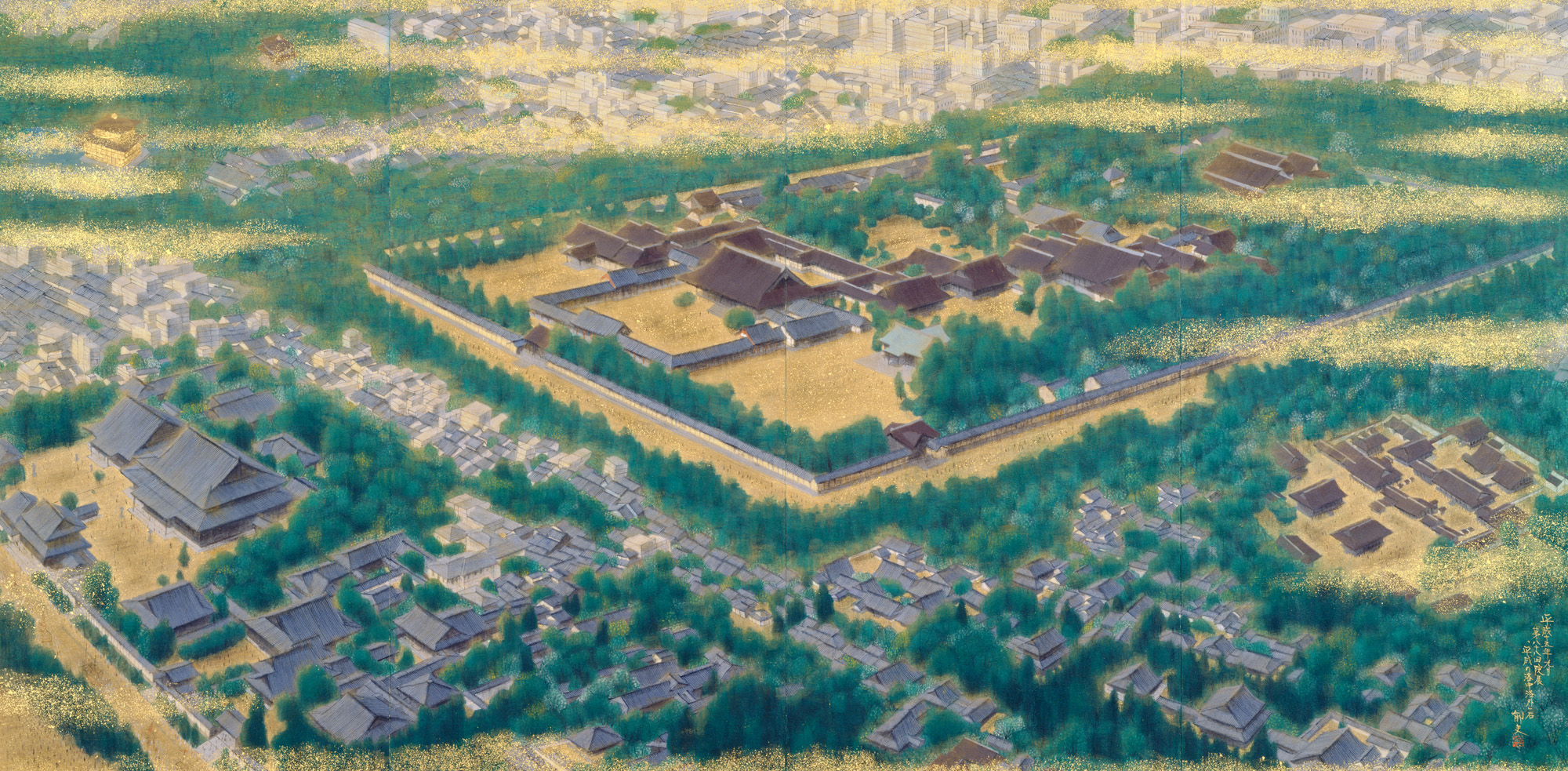New Scenes in and around Kyoto (right)
- Hirayama Ikuo
- 2003
- Color on Paper (Japanese Style Painting, Nihonga)
- 183.0×362.0cm
In the Muromachi period of Japan, has a painting entitled "Luozhong Luowai Tu", which depicts the attractions, shrines, and Buddhist pavilions in Kyoto, the traditional ritual activities of the year and the life of the residents in the city. Hirayama Ikuo also completed paintings with the theme of "Luozhong Luowai Tu" in the Muromachi period and published "Pingcheng de Luozhong Luowai (the screen on the right)" and "Pingcheng de Luozhong Luowai (the screen on the left)" in 2003 and 2004 respectively. Based on these works, he began to paint individual places of interest, shrines, Buddhist pavilions, and those who passed along the local traditional culture. It is said that he had this idea when "The Frescoes in the West of the Tang Dynasty", the masterpiece of the Silk Road series, was about to be completed. He was traveling along the Silk Road to explore the origin of the Japanese culture, and Japan's ancient capital, Kyoto, caught his attention once again. Seizing the opportunity of depicting Luozhong and Luowai in modern forms, Hirayama said, "Even if things change and people are different, the city that has bred Japanese culture is always the capital. As a capital of culture widely acknowledged in the world, Kyoto is the work of art the Japanese nation has completed over the years. So we must be proud of Kyoto and tell this to the next generation. I paint with infinite gratitude and love for Kyoto, and I want to depict the city where I live. I decide to name this series of works "Pingcheng Luozhong Luowai Tu".

